
The Cliff House in 1890.
Local historians routinely disagree on how many Cliff Houses have been built in the wind-beaten northwestern edge of San Francisco. Three is the most common answer, some argue that four is correct, and even fice has its partisans.
But everyone does agree that San Francisco wouldn’t be the same without its legendary Cliff House, a destination for the young and the old, the wealthy and the modest, presidents and plumbers, for a century and a half.
Some observers insist that the first Cliff House was built by gold rush tycoon Samuel Brannan in 1858, who used lumber recovered from a nearby shipwreck.
But his building stood a short distance south of the rocky promontory where the Cliff House stands today and where the second Cliff House — indeed, most maintain the first — was built in 1863 by local real-estate speculator Charles Butler.
His clapboard structure offered peerless ocean views and its fashionable, high-priced dining room kept the carriage trade well fueled. Simply put, the Cliff House was the place to be.
Within five years, Butler’s structure had tripled in size, an expansion that some call the second Cliff House. Others, who considere Brannan’s building the first, have dubbed it the third. Still others insist Butler’s was the first with growing pains.
These changes meant that more and more people-the masses along with the moneyed- were making their way to what was then the distant seaside for recreation.
In time, the respectable nature of the Cliff House clientele began to fade, as gamblers, grifters, and their girls slowly replaced the city’s first families as regular visitors.
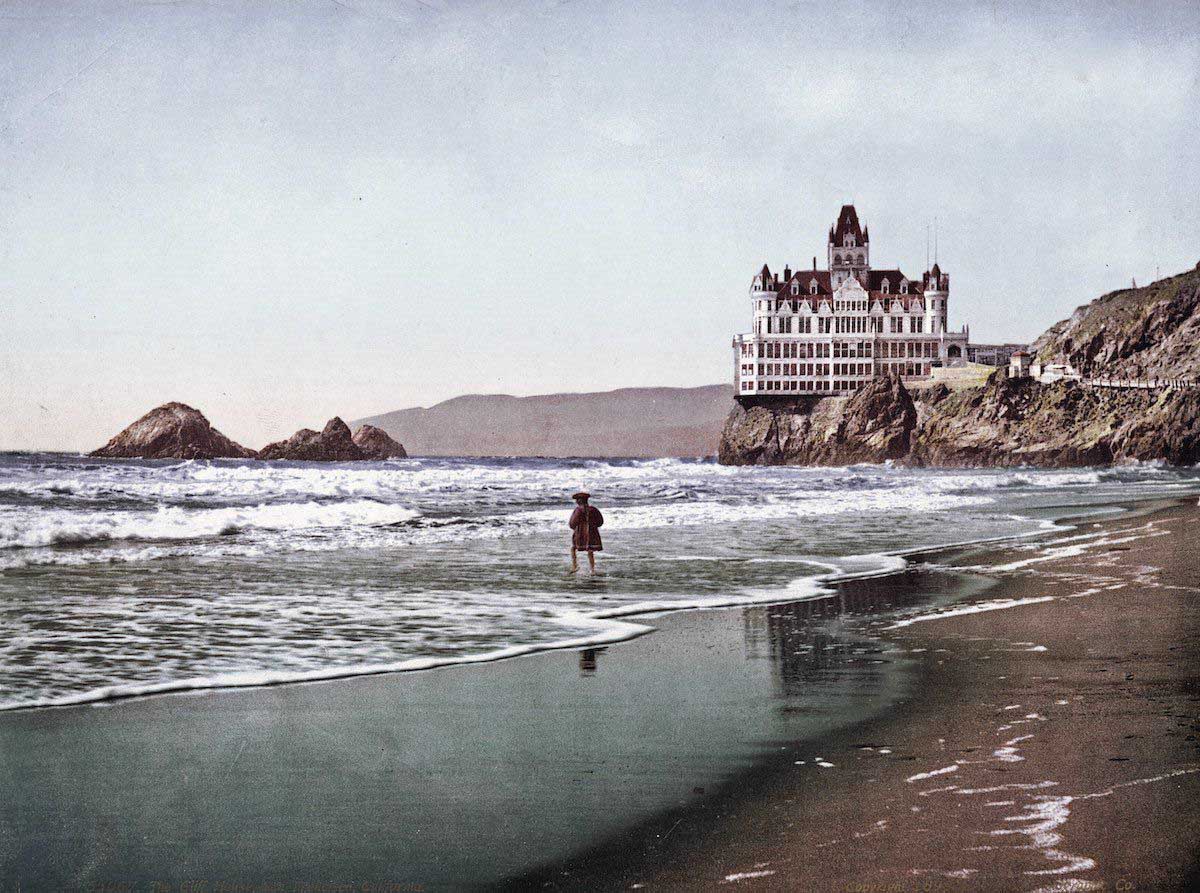 Adolph Sutro, a mining engineer who had made a fortune by modernizing the tunnels of the silver-rich Comstock Lode, decided to save the formerly respectable establishment from its descent into tawdriness and bought it in 1883. He quickly set about ousting the riffraff and refashioned the Cliff House into a family destination.
Adolph Sutro, a mining engineer who had made a fortune by modernizing the tunnels of the silver-rich Comstock Lode, decided to save the formerly respectable establishment from its descent into tawdriness and bought it in 1883. He quickly set about ousting the riffraff and refashioned the Cliff House into a family destination.
After a few years of quiet management, the Cliff House was severely damaged when the schooner Parallel, abandoned with burning oil lamps and a cargo including dynamite powder, exploded while aground at Lands End early in the morning of January 16, 1887.
The blast was heard a hundred miles away and demolished the entire north wing of the tavern. The building was repaired, but was later completely destroyed by fire on Christmas night 1894 due to a defective flue.
The staff was unable to save the guest register, which included the signatures of three U.S. Presidents and dozens of world-famous visitors. This incarnation of the Cliff House, with its various extensions, had lasted for 31 years.
 By 1896, Sutro, who owned more than a thousand acres of the surrounding oceanfront property, had replaced the burned-out remains with a monumental, multi turreted edifice that was reminiscent of a French chateau, with facilities as grand as the architecture.
By 1896, Sutro, who owned more than a thousand acres of the surrounding oceanfront property, had replaced the burned-out remains with a monumental, multi turreted edifice that was reminiscent of a French chateau, with facilities as grand as the architecture.
The new Cliff House was a truly opulent sight, yet Sutro was intent on making it a destination for working-class and wealthy families. He succeeded by offering a menu with affordable prices — a dime got you a seat on the porch and a drink — and a rail line that only cost a nickel and ended at the beach.
Eleven years later, fire once again roared through the Cliff House, burning Sutro’s “gingerbread palace” to the ground. A “giant gray shoebox” of concrete and steel rose in its place, opening in 1909.
In 1914, the guidebook Bohemian San Francisco described it as “one of the great Bohemian restaurants of San Francisco. … while you have thought you had good breakfasts before this, you know that now you are having the best of them all.”

Second Cliff House, c.1900.
Although in the decades that followed, the building was regularly refurbished, refitted, and remodeled, shuttered and reopened, bought and sold, the 1909 “shoebox” is the Cliff House of today.
In its lifetime, it has boasted everything from the largest gift shop in the world to an employee roster that included Rudolf Valentino as a dance instructor.
Today, the Cliff House remains an iconic destination and a beacon of hospitality as the westernmost edge of the city. Indeed, no visit to San Francisco is complete without a stop at the Cliff House.

Beach walkers near Cliff House. 1902.


View taken from the Parapet at Sutro Heights, Adolph Sutro’s estate above the Cliff House.

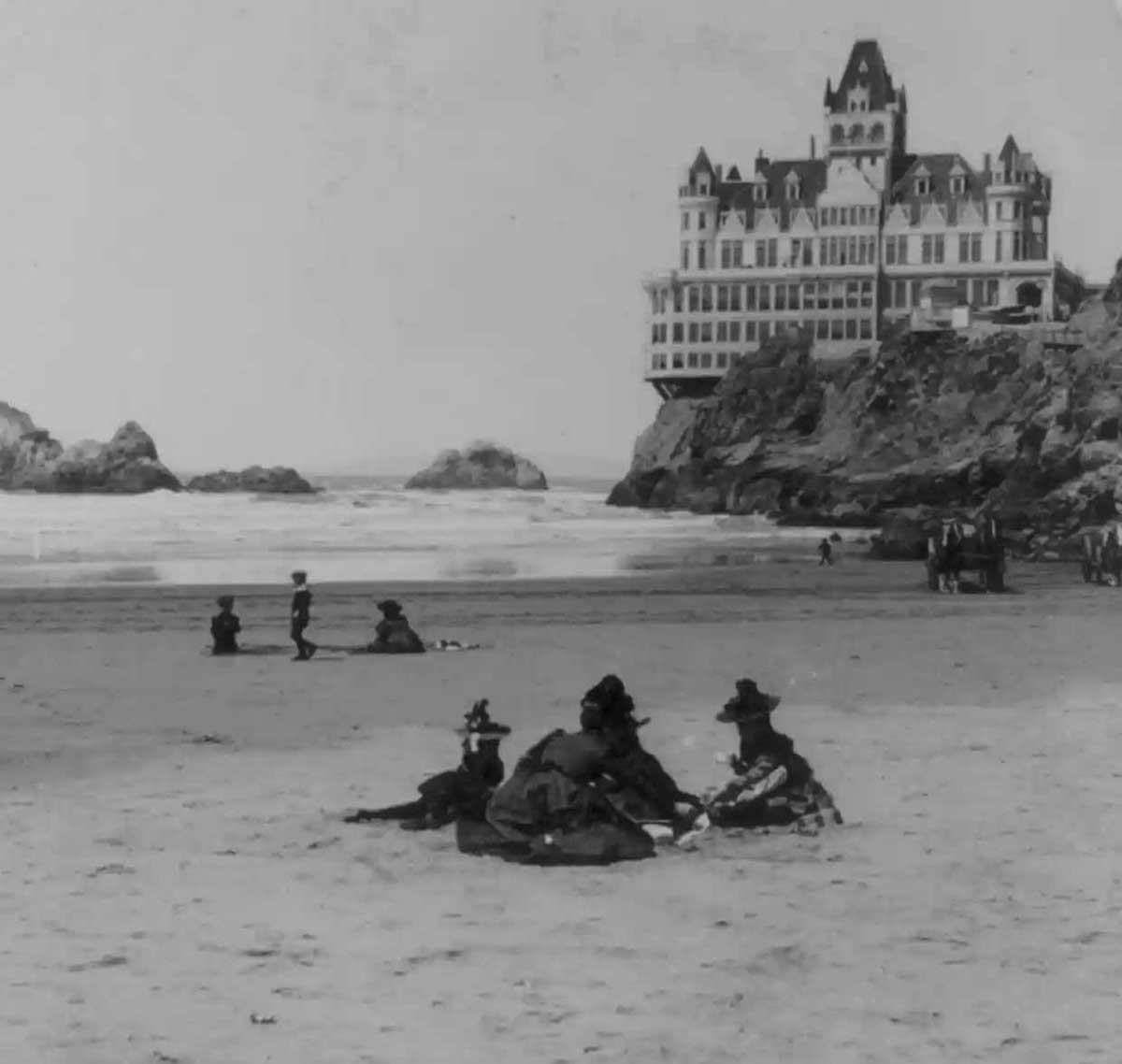
The Cliff House is perched on the cliffs just north of Ocean beach in San Francisco.
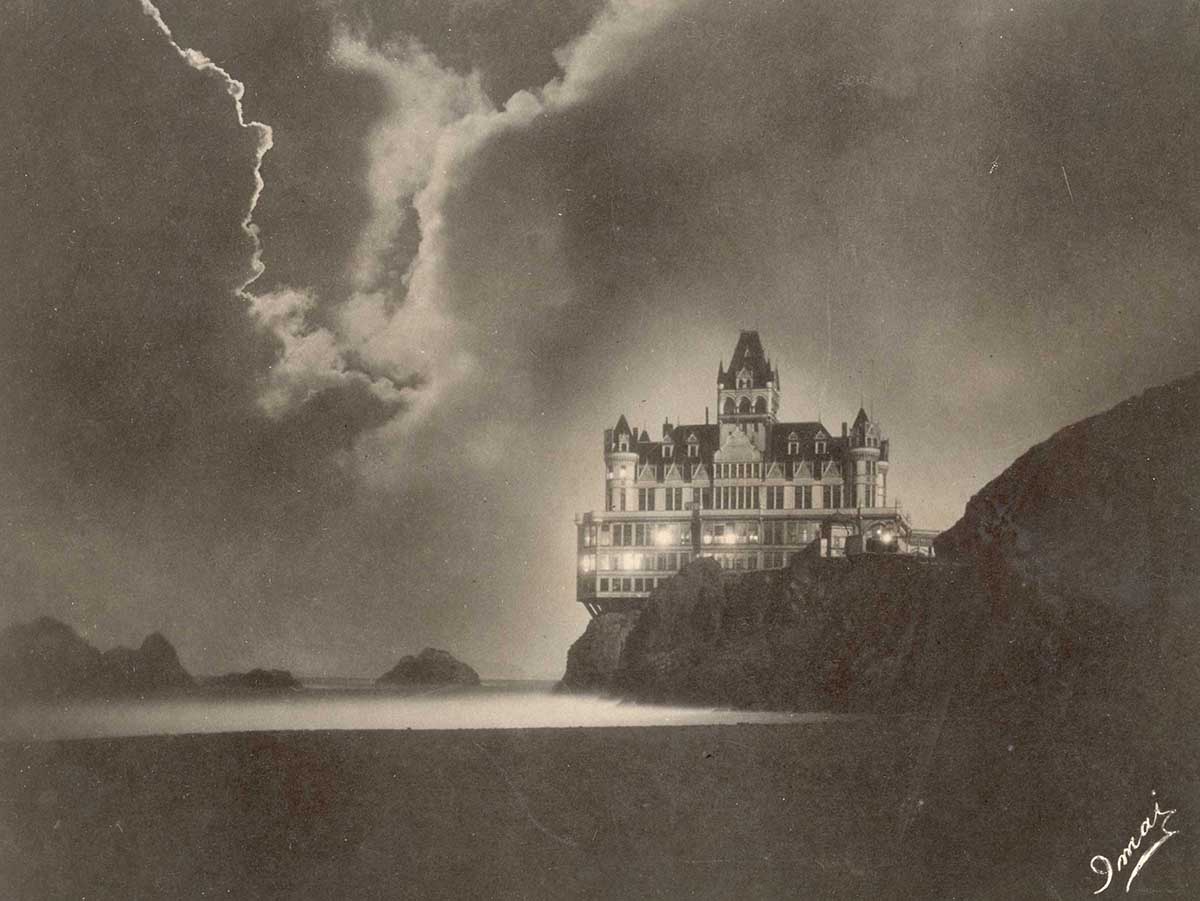

The Cliff House in 1901.
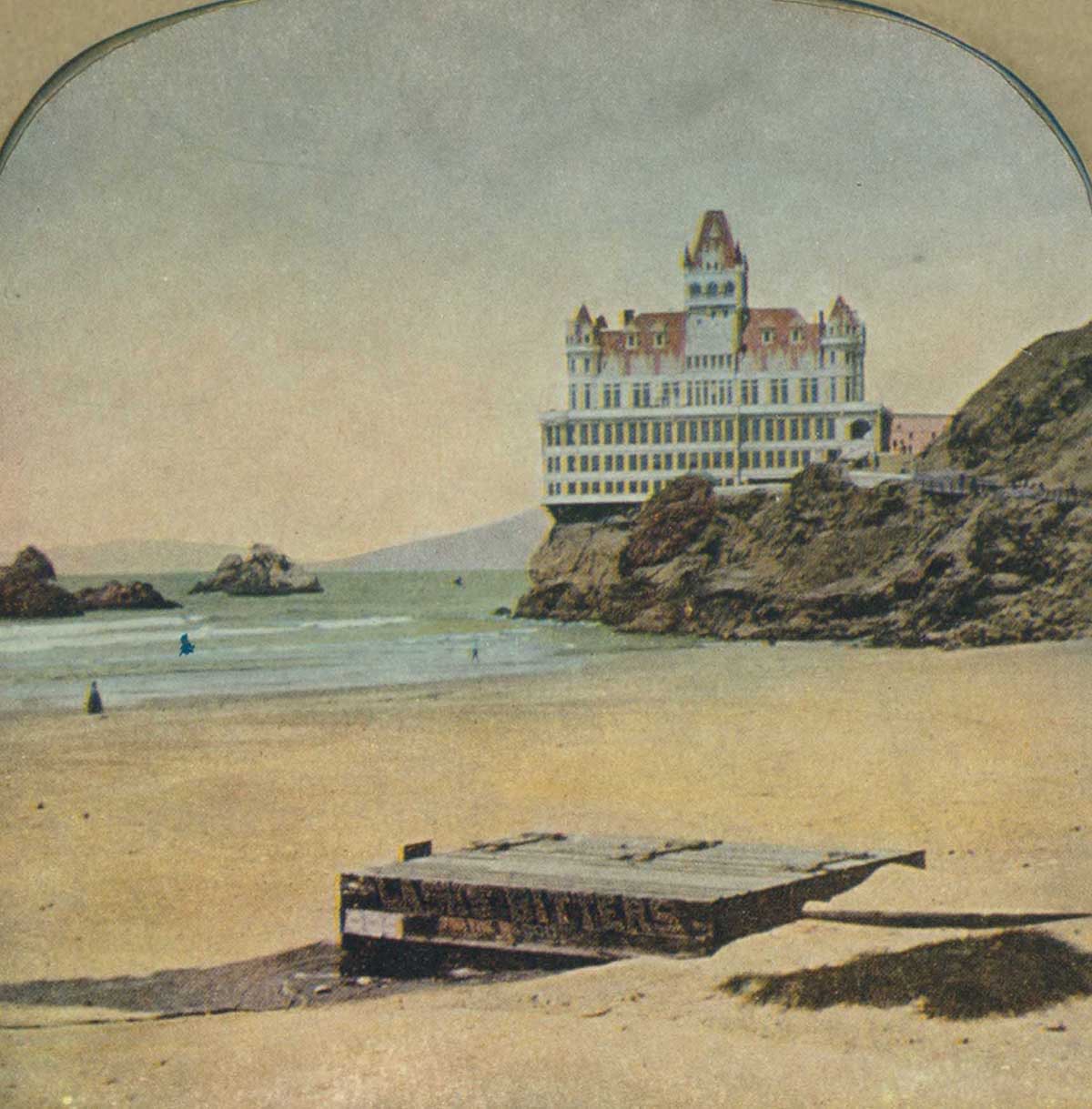
The Cliff House in 1901.
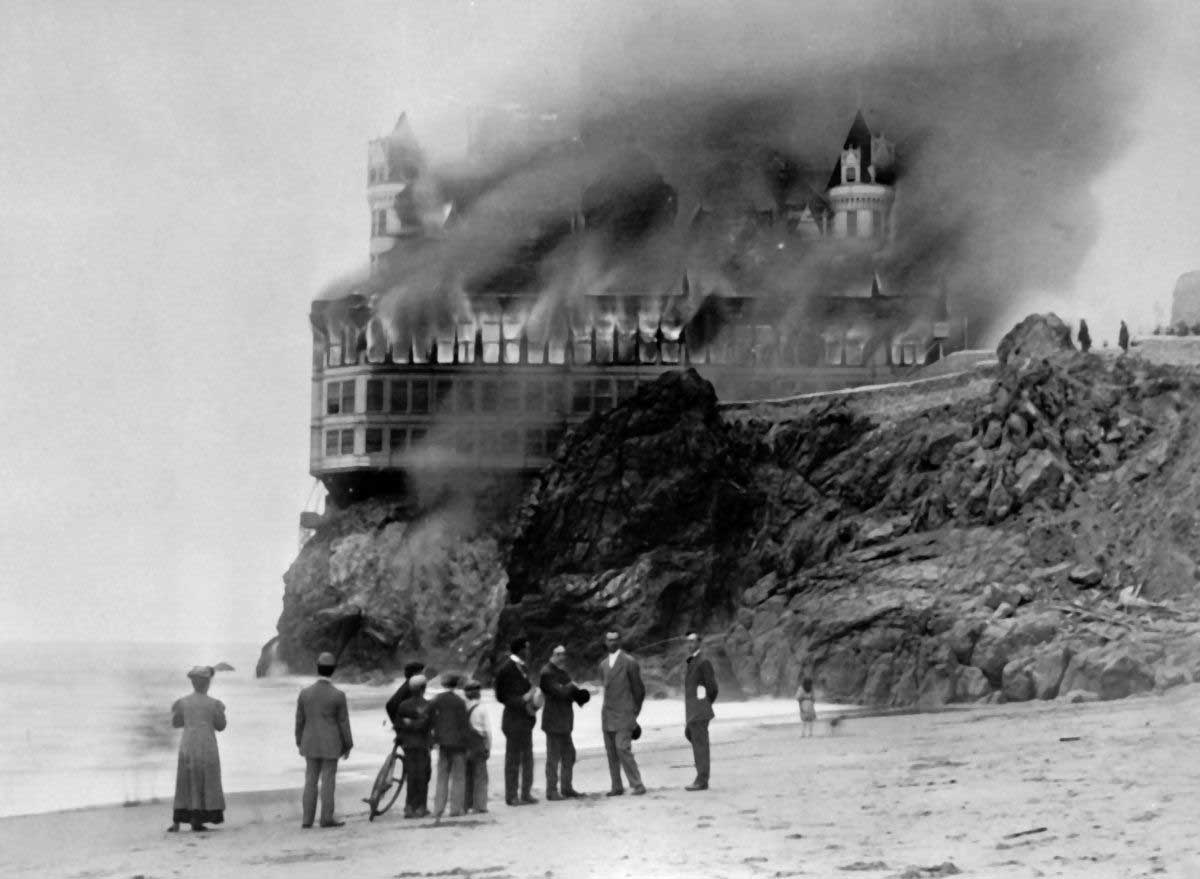
The Cliff House hotel burns. 1907.

First Cliff House, c. 1868.

The Cliff House is perched on the cliffs just north of Ocean Beach in San Francisco.

Third Cliff House, c.1909.

People play on a beach by Seal Rocks and the Cliff House, in San Francisco, California. 1956.

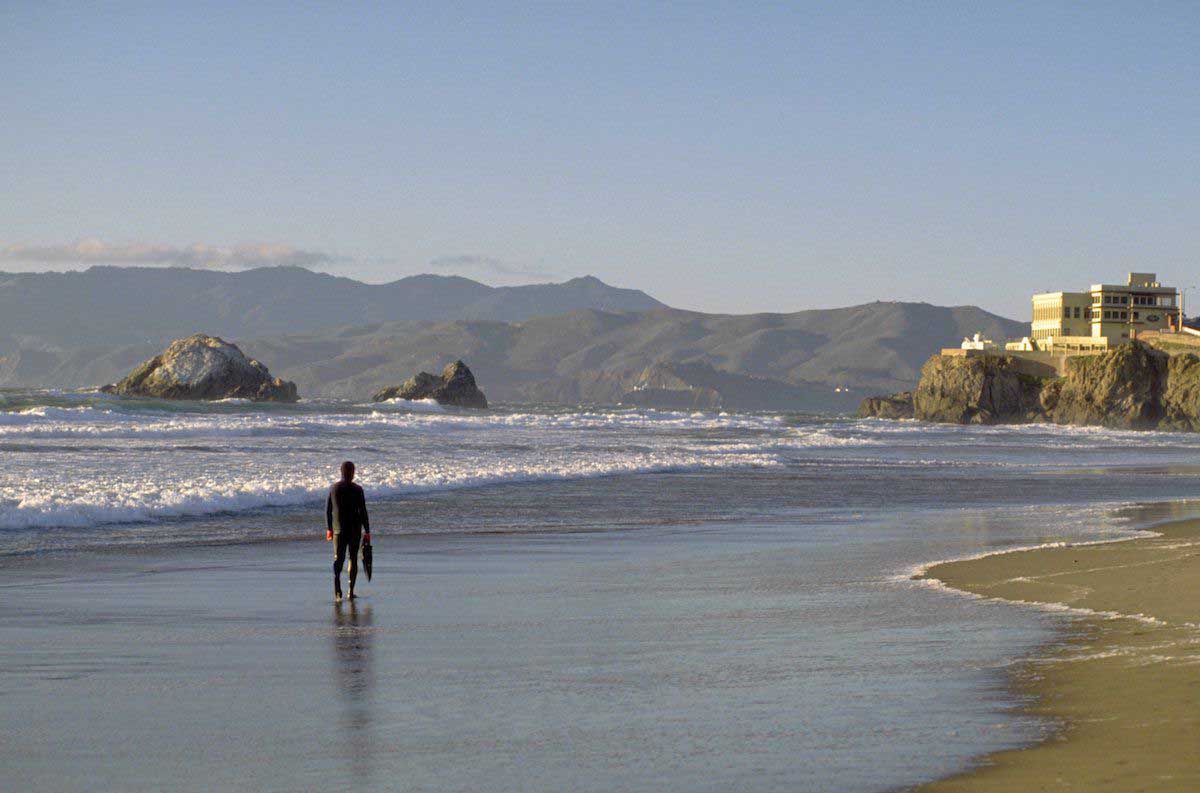
Ocean Beach and Cliff House in San Francisco.

Cliff House from Ocean beach, 2010.
